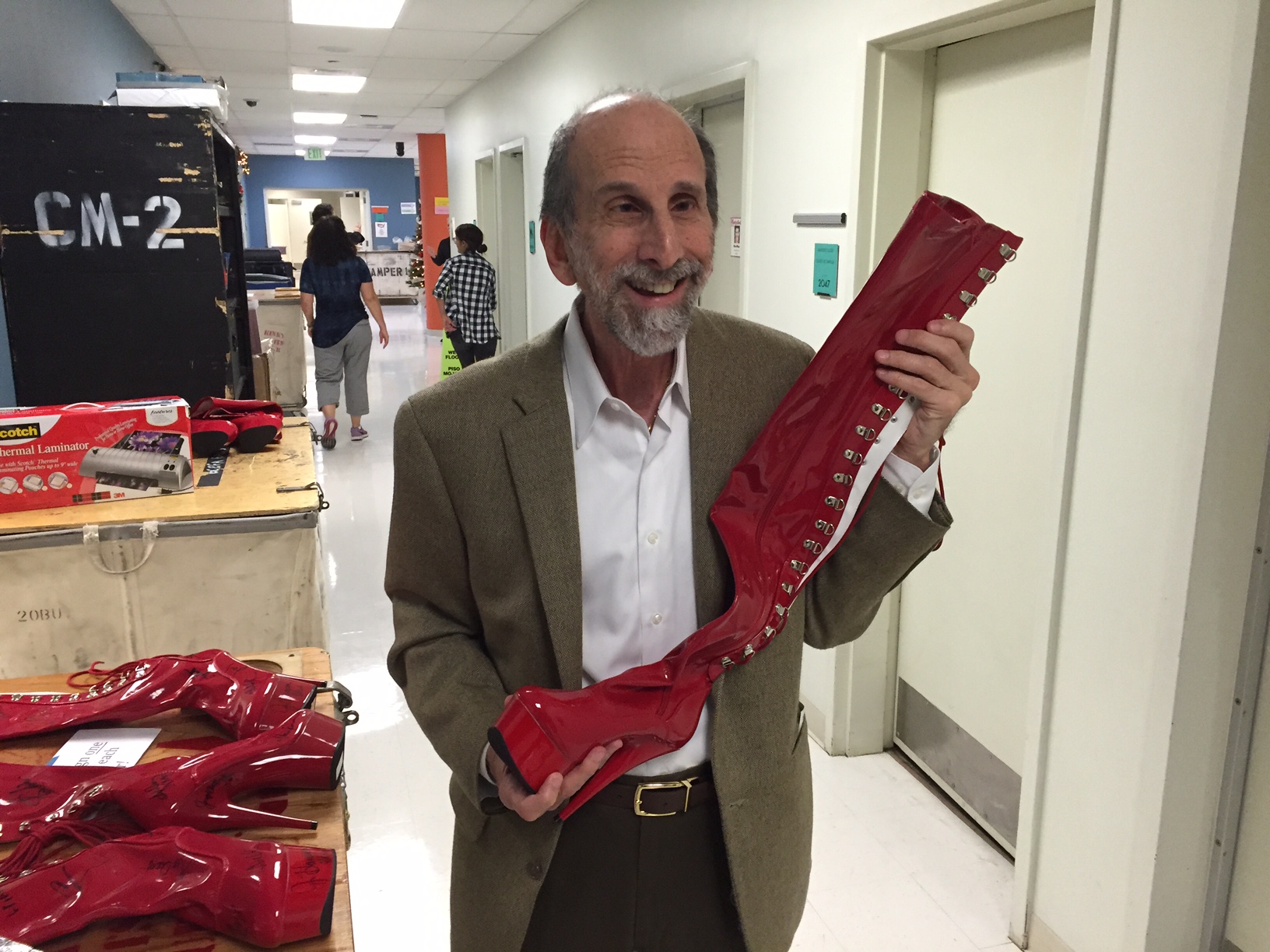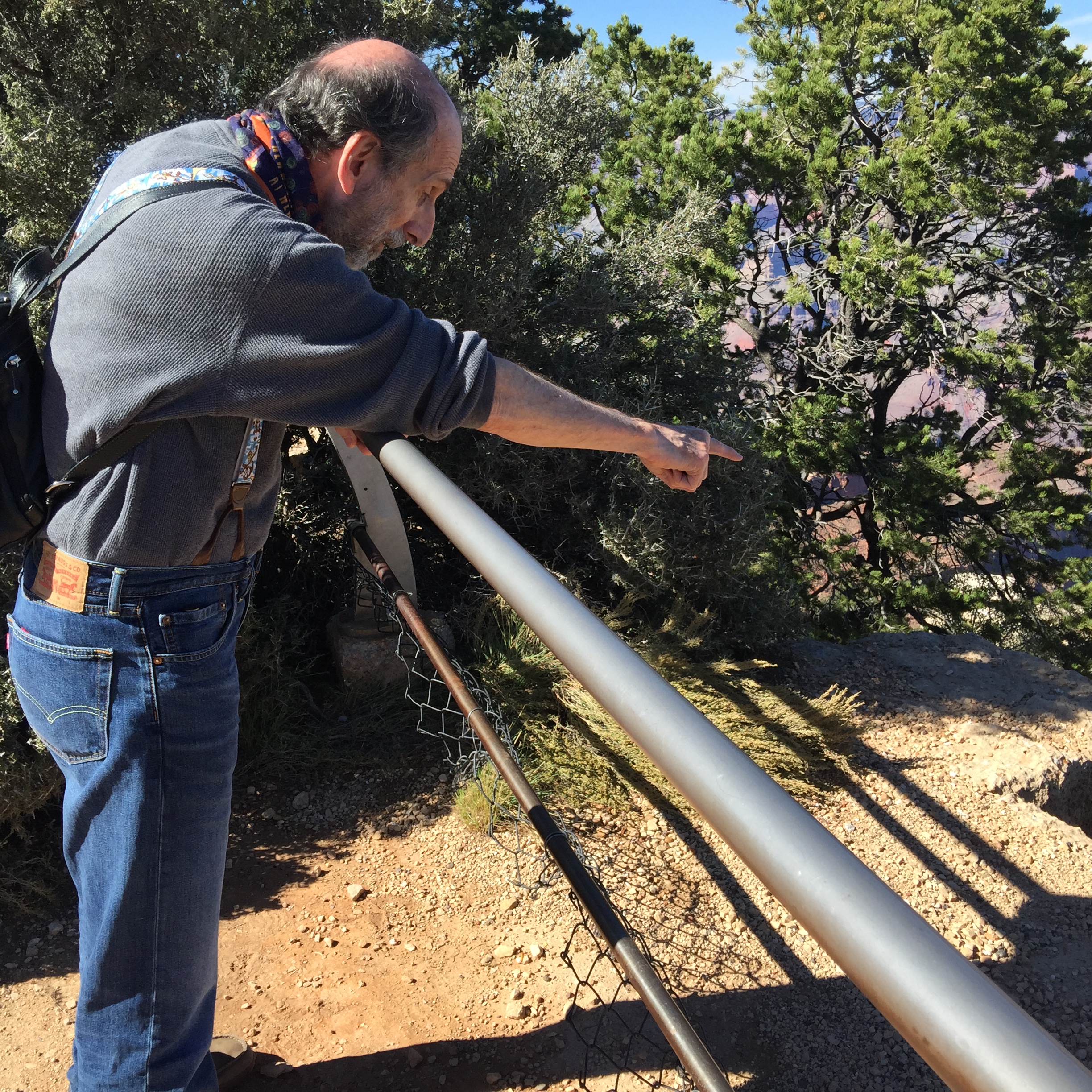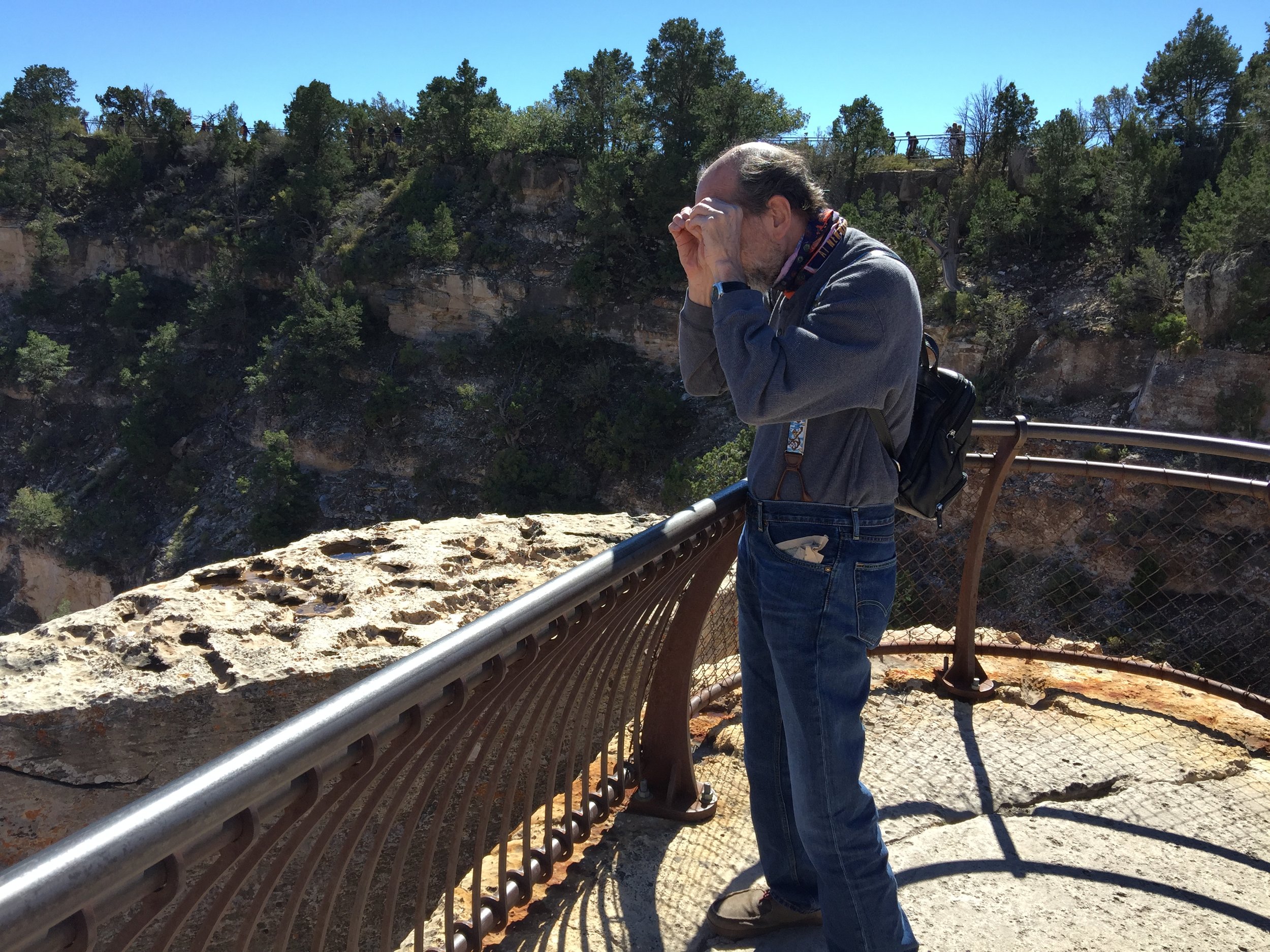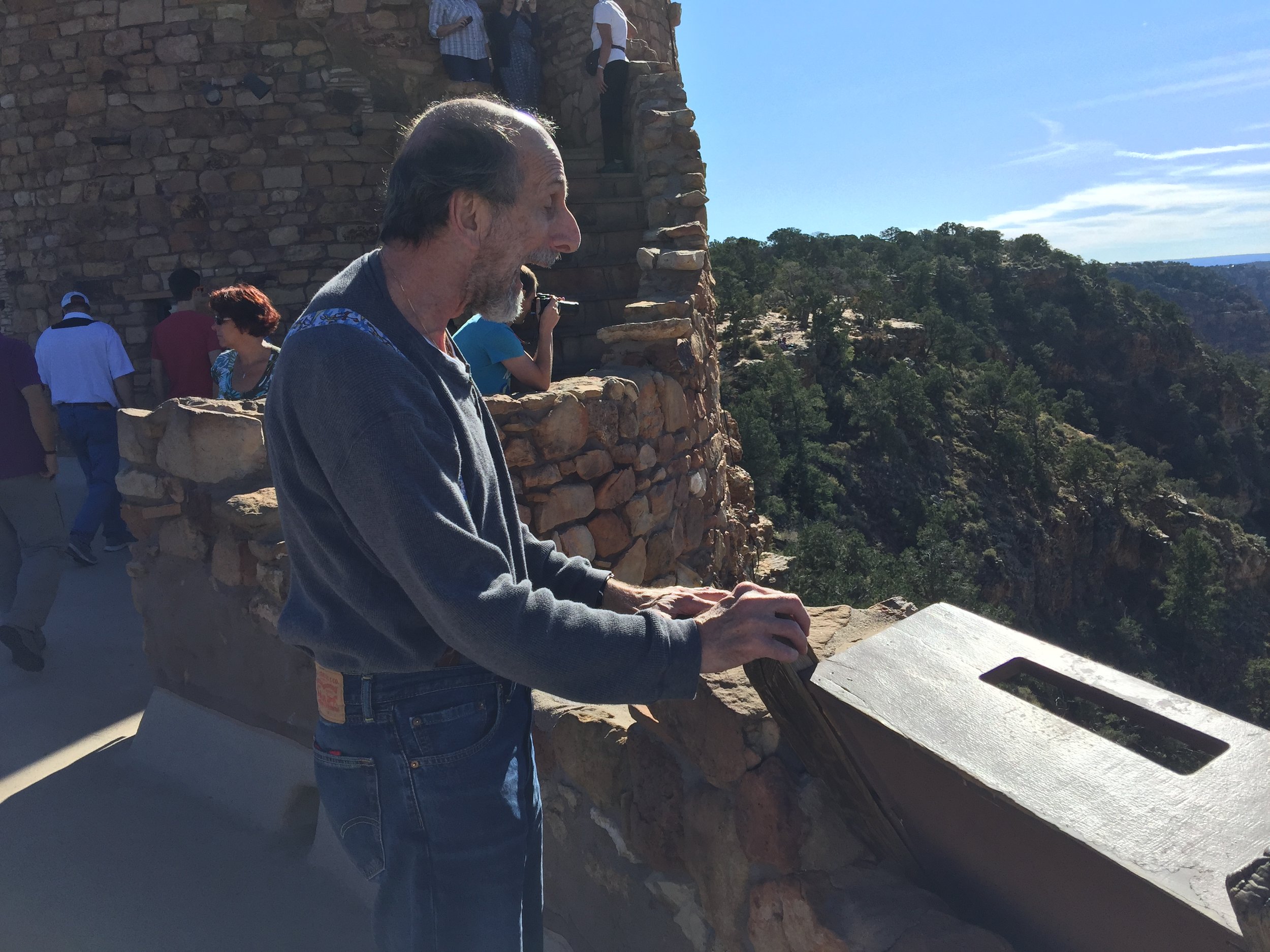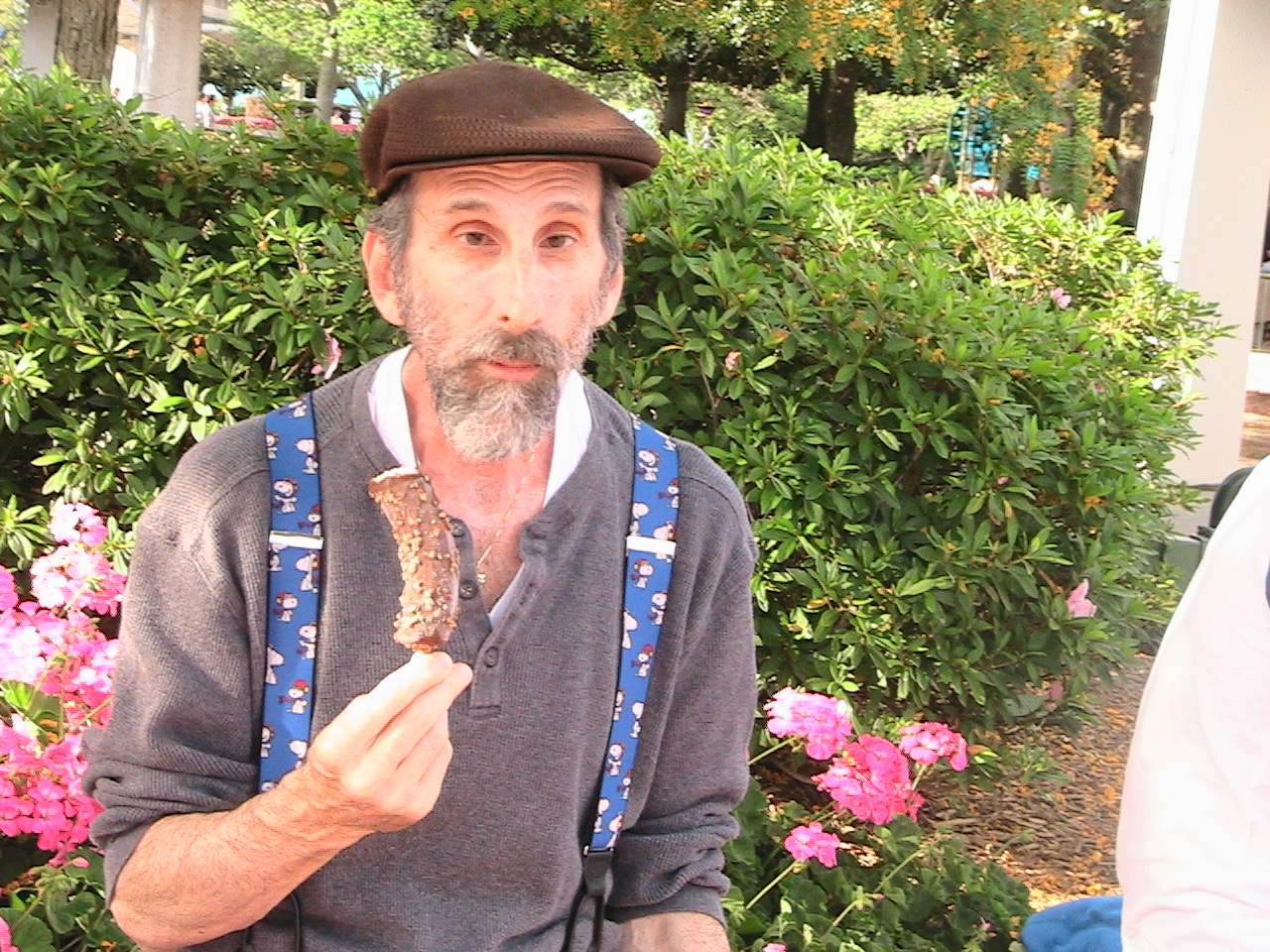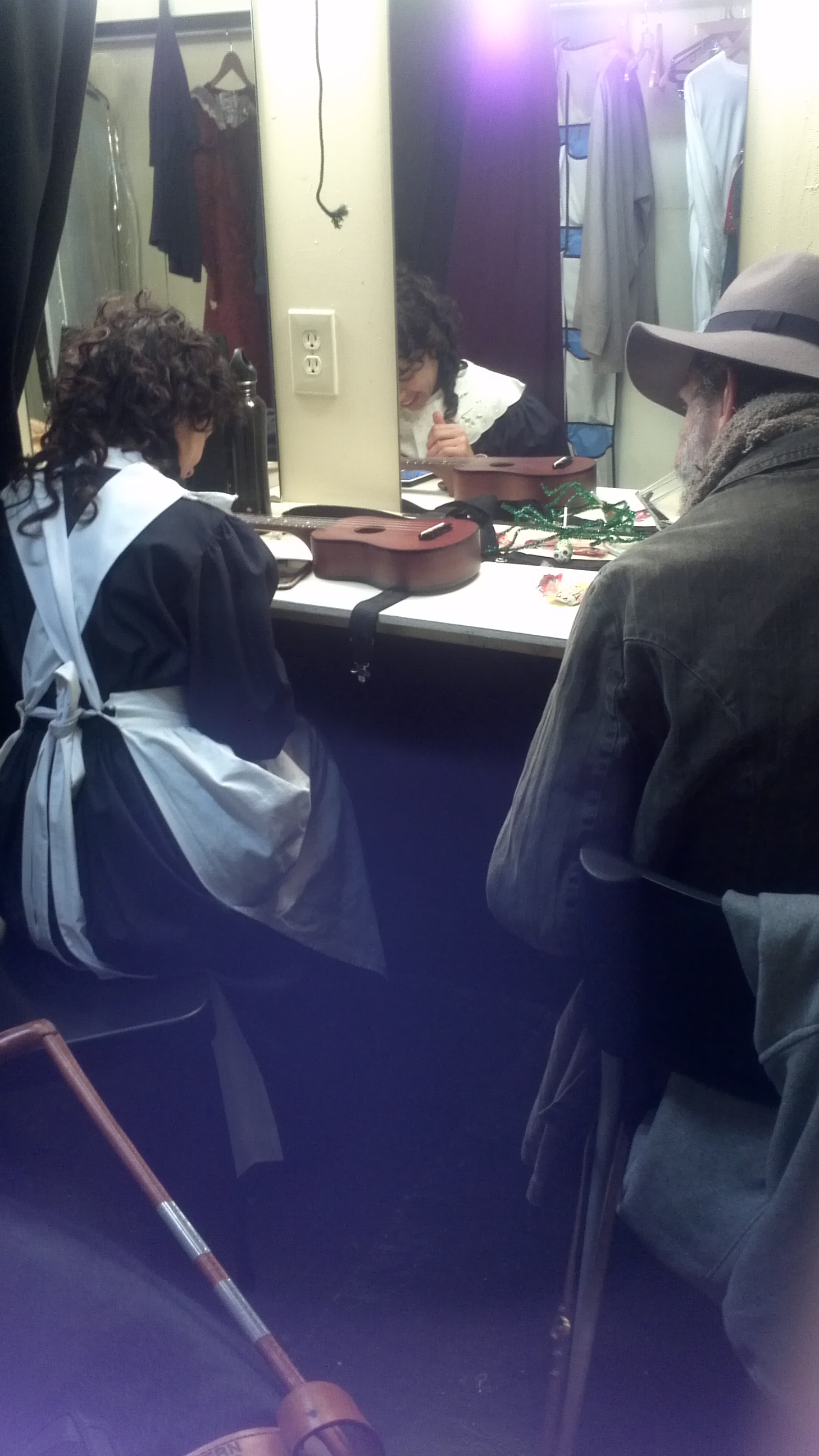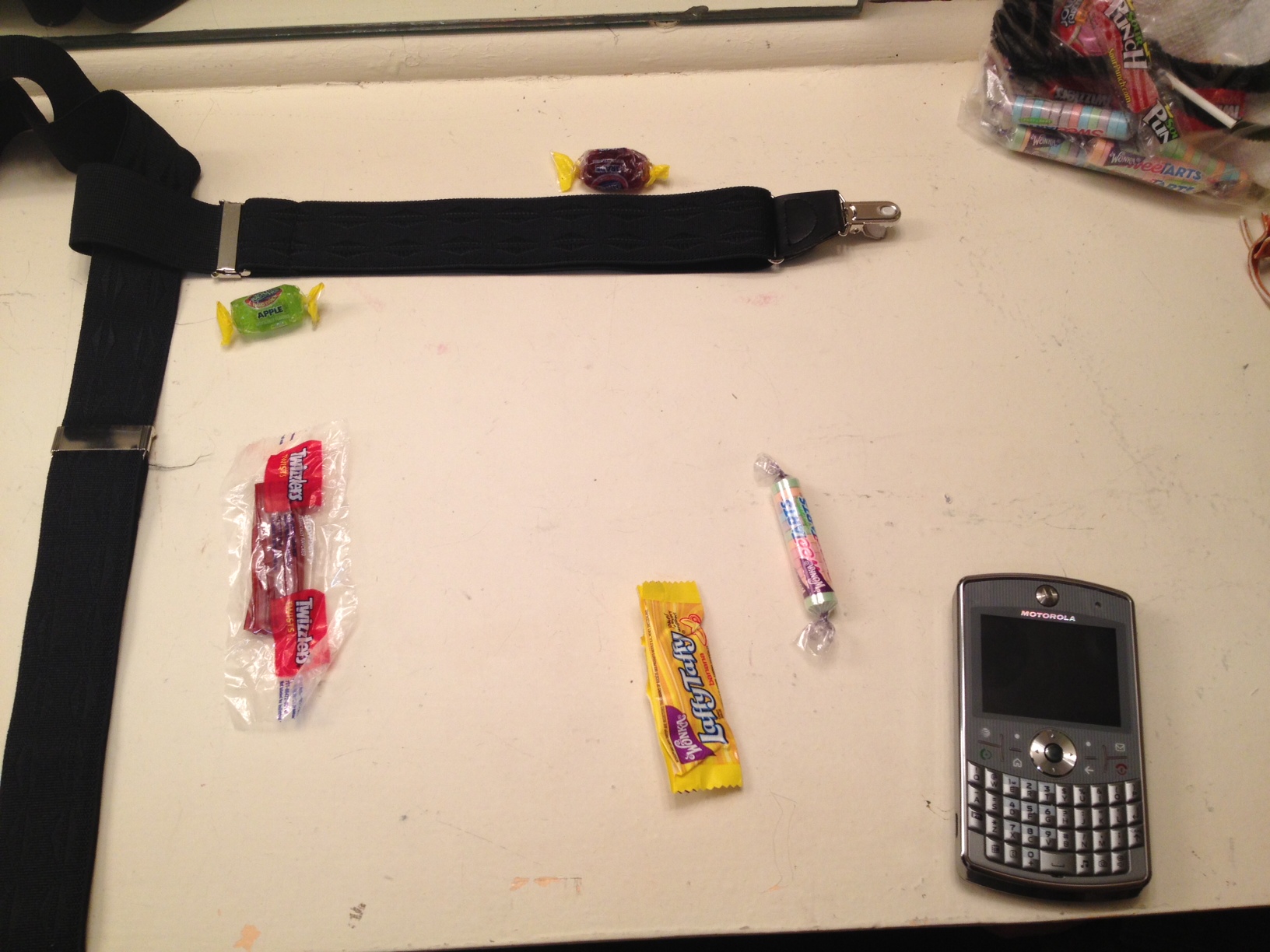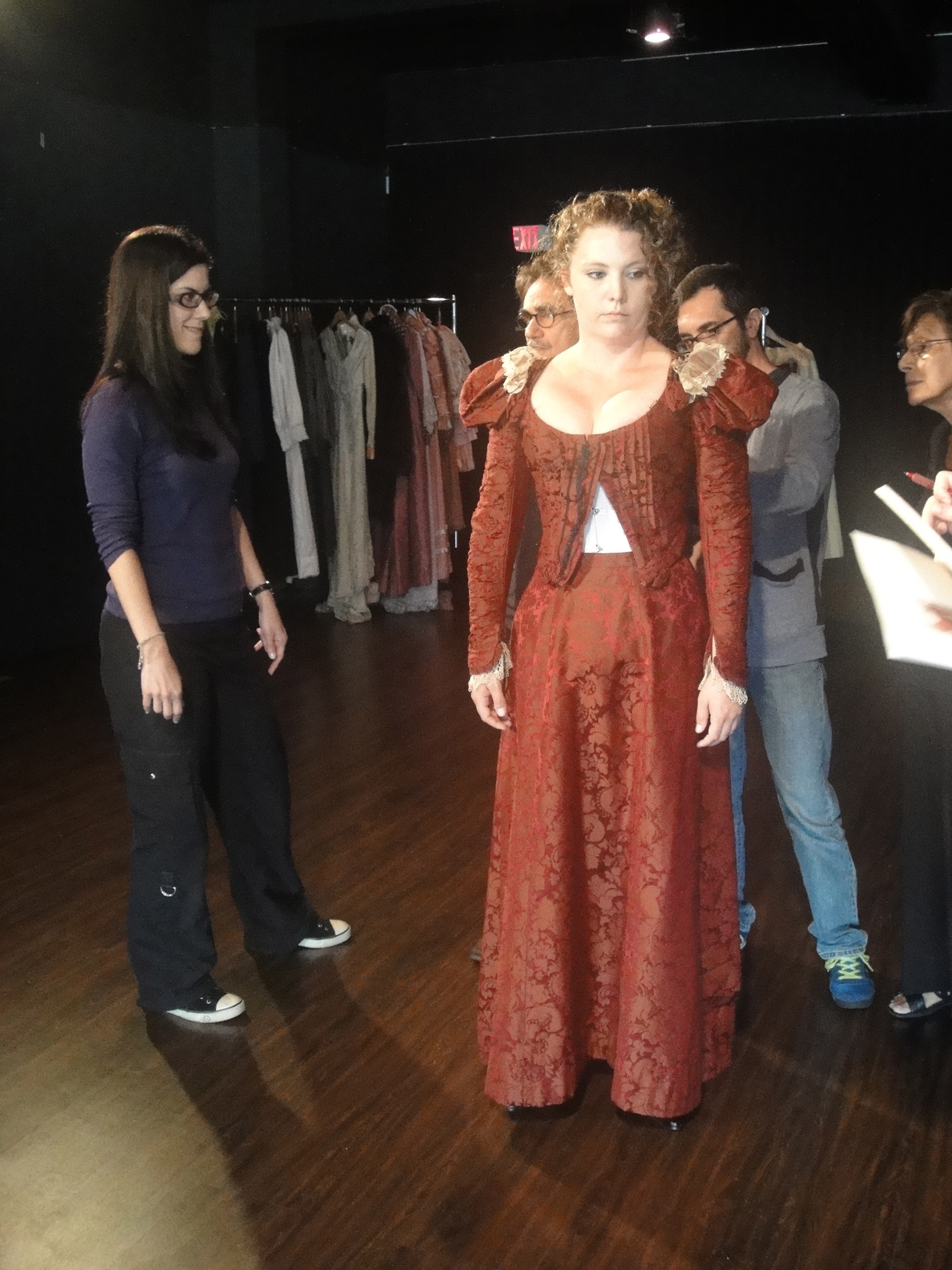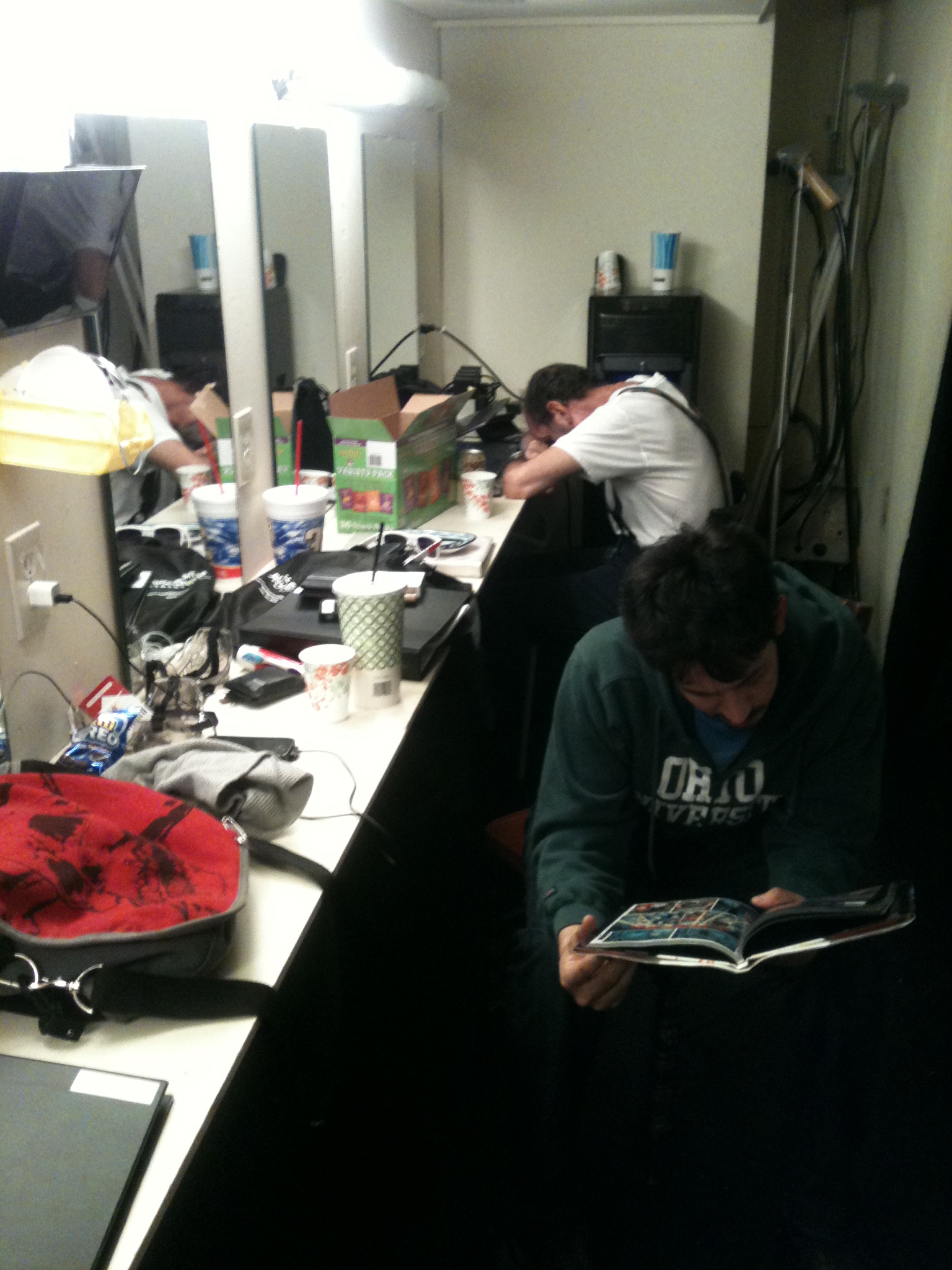Photo credit: Aida Zuniga I’ve groused aplenty about how the world doesn’t have blind folks at the top of its A-List, so now it’s time to give credit where credits due.
More and more devices and services are coming online that enrich the lives and experiences of blind folks and those with low vision. Technology is moving well beyond computer screen readers and talking thermometers, especially in the world of entertainment.
Several years ago, the first round of “video described” movies made it possible for blind folks to know what was going on between the dialogue. The original Star Trek films and Pretty Woman were among the first few titles where narration, carefully synchronized with the actors' words and motions, was added to the soundtrack after the film was shot. This made blind movie fans aware of the nonverbal action on the screen. I recall a specific narrative in Pretty Woman when Richard Gere is first driving with Julia Roberts in his rented Lotus: “She reaches over and feels his crotch.”
There are now thousands of films and TV “described” shows available as MP3 downloads. (All you really need is an MP3 player and the sweetened audio track of the film unless, of course, you are watching the video with your sighted girlfriend.)
Methinks in a real sort of way, the added narration is a show unto itself. One can only imagine the colorful narrative to the Game of Thrones. Yup, it’s all there.
Even my local movie theater complex offers video description for those first run films that are released with the pre-recorded narration, though the technology can be a bit finicky and doesn’t always work.
Comcast now has its X1 Entertainment Operating System which speaks aloud the channel, current program, and reads the TV guide and controls for programming your DVR. For those TV shows offering video description, many from PBS, blind and low vision users get increased access to the action on present-day TV.
And now, like Santa, Broadway with audio description has come to town.
On any given Sunday matinee, Florida Grand Opera, the Miami City Ballet and many of the musical roadshows presented at the Arsht Center in Miami are audio described with a live narrator. Unlike recorded films and TV, describing live shows has some synchronization challenges since the pace of the action may vary from performance to performance. It requires the narration to be matched to the action in real time by a breathing person via a FM transmitter to a receiver headset worn by the patron.
I just attended the national tour of Kinky Boots, a Broadway musical based on the film of the same name, The inspiration for which came from a true story about a young man (Charlie Price) who inherits his family’s shoe factory and, in order to save the business from bankruptcy, converts it from making fine men’s footwear to producing red thigh high boots for drag queens and fashionistas.
So, how did I know the boots were red? Read on, Macduff.
First off, a pre-show backstage ‘touch tour’ of some of the props and set pieces offered up the first sense of dimension for the blind experience. Grabbing hold of a pair of kinky boots was, well, kinky.
When there’s dialogue, you have the sense of what’s happening, but when there is silence between the actors, or the actors are singing or dancing, the action is totally lost on blind folks.
As a pumped up Charlie sang about the steps he needed to take to make the prototype boot to serve his underserved niche market, he pulled a piece of leather out of a bucket and began to fashion the first boot; there was a sewing station and a production area on stage around him. I knew all this because of the narration I heard through my earpiece as he sang. The driving tune suddenly became three-dimensional with the descriptive imagery planted squarely in my mind.
After a few false starts and some helpful design tips from the lead gender bender, Lola, singing “The Sex is in the Heel,” the factory workers later raised the roof as the first pair of "kinky boots" was finally completed. The sexy lyrics were even sexier knowing that one of Lola’s backup drag dancers, one of the “angels,” did a full split in heels and another did a backflip; the excitement was more exciting knowing that dancers shimmied and swiveled in “halter tops, short shorts and work boots” as the first completed boot was revealed. Everybody (me included) shouted “yeah, yeah!”
The spoken cues indicated more depth of character when factory worker Lauren “moved in close to Charlie’s face and was reluctant to remove her hand from his thigh” as she sang of her history of choosing the wrong guys, even while falling in love with Charlie. Descriptions of the subtle gestures and facial expressions between Charlie and Lola added an emotional dynamic as they discovered their similarly complex feelings toward their fathers. Knowing that Lola exited the nursing home “straight and proud” in her white dress, after singing to her estranged wheelchair-bound dying father to hold her in his heart, added the otherwise missing element of both love and defiance.
The graphic description of Lola’s provocative moves while proving that she was closer to a woman's ideal man than was Don, the foreman and her heavy-set macho antagonist, enhanced her song and dance with some tasty spice. After challenging her to a boxing match, the ‘slow-mo’ blows that Lola landed on Don in the boxing ring was the only way I knew who was winning the fight. Without the verbal cues before Lola and the angels arrived to save the day, I would never have known that Charlie stumbled more than a few times on the runway while modeling his boots during the Milan industry show.
While attending a play or musical, it’s often a big mystery to me when scenes change. When the scene shifted from the shoe factory to London to a pub to a boxing ring to the runway in Milan, I was knocked out with a greater sense on what the heck was happening on stage!
Without the narration, how else would I have known that the hefty Don, now Lola’s ally, showed up on the runway in Milan wearing a feminine blue outfit and boots?
Oh yeah, also while in Milan, one of the angels who saves the day was “dressed in a British flag, wearing 2 and ½ feet thigh high red kinky boots.”
That’s how I knew they were red.

